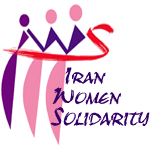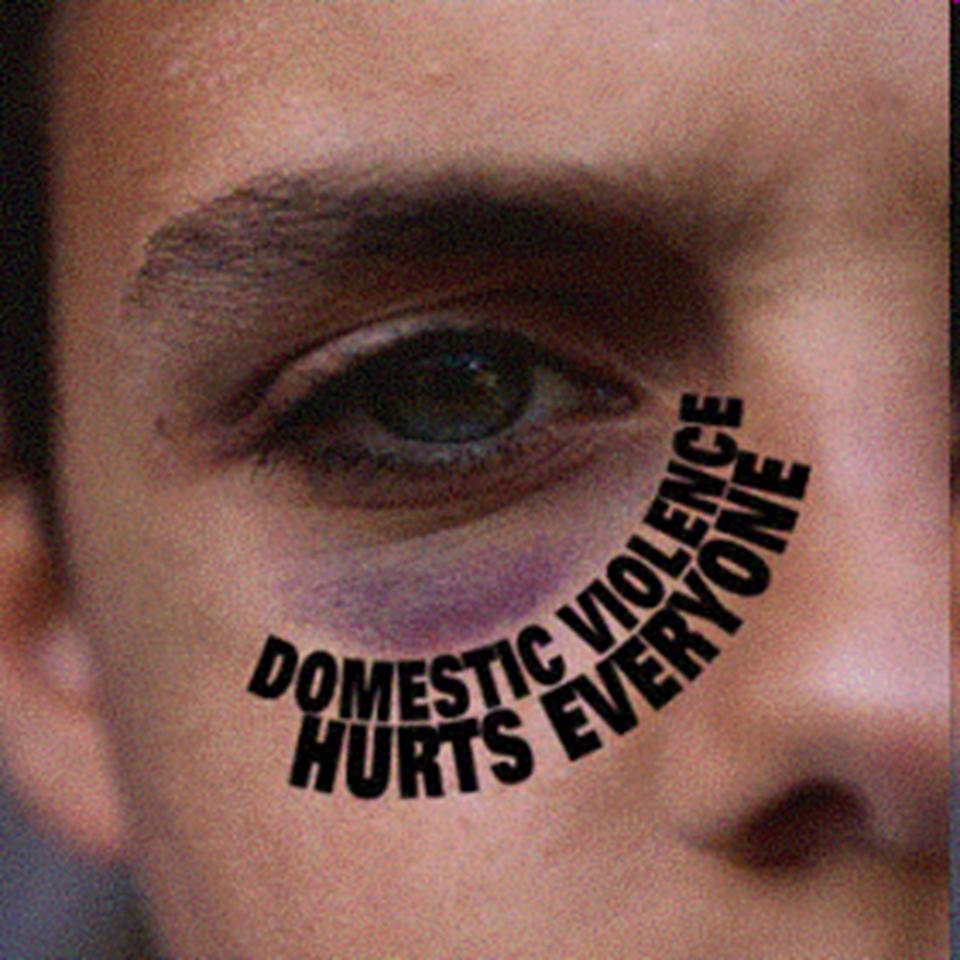By Elahe Amani
“I was excited to come to US, but since my arrival I have not had one happy day. He needed a servant and a nanny for his kids. For everything, I had to ask for his permission. He beat me frequently (not in front of the kids) and he said bad words to me that crashed my self-esteem and self-respect. But, I think hitting is better than the words that mutilated my soul. Bruises will disappear but his words keep echoing in my minds, in my ears and even up to this day drive me crazy. He threatened to “ship” me back and revoke his application for my green card. How can I go back? In my community the woman is the one who always being blamed…”
These are the words of an abused immigrant woman who came to US on a Fiancé visa. She did not know anyone, did not speak English, and for a whole host of reasons did not want to go back to her home country. I met her in one of the women’s shelters in Los Angeles County in 1990.
Immigrant women, regardless of being in the US legally or illegally, face challenges above and beyond the native women facing abusive relationships. There are several factors that make the choice to break from such abusive relationships much more difficult. Faced with cultural and language barriers, separation from a support network, family, and friends, a fear of authorities and deportation, the abuser’s threats to harm or take away their children, all while fearing being ostracized among their communities and families prevents many women from breaking free of these relationships. While isolation is a powerful tool in sustaining the cycle of power and control, the isolation of immigrant women has a much deeper meaning for them. An abuser may control the communication with family and friends back home, may permit very little or no contact with neighbors and people in community to prevent making new friends, and control phone, internet, listening to ethnic language radio programs and TV programs, and even locking the door when not home.
Of course language barriers reinforce isolation to a greater degree. Immigrant women in abusive situations may not be allowed to attend classes to learn to speak, read and write English. Immigrant women may not be allowed to learn to speak, read, or write English. This makes it easier for an abuser to create a fear of authorities, to lie about her immigration status, and to not follow up with the necessary paperwork for her legal status, all of which keeps her dependant, fearful and in dark.
National Domestic Violence Awareness Month
Social awareness about gender violence, including violence perpetuated against women and girls at home in both immigrant and native communities, has made significant strides during the last three decades, but not significant enough!
The “Day of Unity” in October 1981, organized by National Coalition Against Domestic Violence (NCADV), aimed to connect domestic violence advocates and service providers across the US who worked to end violence against women and their children.
The Day of Unity quickly became a special week, during which several activities were held at the local, state, and national levels. These activities were as varied and diverse as the program sponsors, but had common themes: mourning those who have died because of domestic violence, celebrating those who have survived, and connecting those who work to end violence.
With the great efforts and leadership of the NCADV, the first national Domestic Violence Awareness Month was observed six years later in October of 1987. In 1989 the U.S. Congress passed Public Law 101-112 designating October of that year as National Domestic Violence Awareness Month. In 1989, the US had 1,200 battered women programs, which sheltered 300,000 women and children per year. 1
While the movement to address domestic violence gained momentum during the late 80s and early 90s, the awareness of the legal and judicial system and of access to community organizers dealing with issue of violence against immigrant women, was very limited and lacked both clarity and direction.
Leaders of the immigrant community worked to “keep face” and a cultural relativism was a barrier for advocates to shift the paradigm from private to public and from personal to a political matter needing to be addressed.
In the same year, the Brooklyn Supreme Court Justice Edward Pincus sentenced Chinese immigrant Dong Lu Chen to five years probation for using a claw hammer to smash the skull of his wife. Pincus concludes that traditional Chinese values regarding adultery and the loss of manhood drove Chen to kill his wife. Pincus justifies Chen’s probationary sentence by stating that Chen was just as much a victim as his wife due to extenuating circumstances. The Chen decision sent a message to battered immigrant women that they had no recourse against domestic violence.
During the 1990’s, the Immigration and Naturalization Service (INS) begins to recognize domestic violence as grounds for asylum in the US. A judge ruled, for example, that the wife and children of a prominent Jordanian may be given asylum in the US, and that the batterer be excluded from entering the .The judge’s decision was based on the belief that the batterer would carry out his threats to kill the wife and children and use his influence in Jordan to get away with it. The threats of abuse justified the asylum. 2
In 1993, The United Nations recognizes domestic violence as an international human rights issue and issues a Declaration on the Elimination of Violence Against Women. The Organization of American States issued a similar resolution. 2
Congress passes the Violence Against Women Act, part of the federal Crime Victims Act, that funded services for victims of rape and domestic violence, allowed women to seek civil rights remedies for gender-related crimes, and provided training to increase police and court officials’ sensitivity. For the first time it created a a federal right to sue the assailant for gender-based violence and to provide that states and American Indian nations give full faith and credit to each other’s restraining orders. 2
Ratification of Violence Against Women Act
One outcome of the movement to address violence and abuse at home, which saw the efforts of thousands of women and human rights advocates and other actors of civil society, was the passing of the Violence Against Women Act (VAWA), which signed into law in 1994. VAWA is a landmark piece of legislation that sought to improve criminal justice and community-based responses to domestic violence, dating violence, sexual assault, and stalking in the United States. The passage of the VAWA in 1994 intended to foster community-coordinated responses that brought together, for the first time, the criminal justice system, the social services system, and private nonprofit organizations/civil society responding to domestic violence and sexual assault. It also facilitated the recognition and support for the efforts of domestic violence shelters, rape crisis centers, and other community organizations nationwide working everyday to end this violence. VAWA also brought a new focus on underserved populations and Native victims of domestic violence and sexual assault.
[VAWA->http://www.thehotline.org/get-educated/violence-against-women-act-vawa/] was reauthorized in 2000 and Congress improved the foundation established in VAWA 1994, by including: the identification of the additional related crimes of dating violence and stalking, the creation of a much-needed legal assistance program for victims of domestic violence and sexual assault, the promotion of supervised visitation programs for families experiencing violence and further protecting immigrants experiencing domestic violence, dating violence, sexual assault or stalking, by establishing U- and T-visas and a focus on trafficking of persons
Despite many challenges, VAWA was reauthorized in 2005. In addition to enhancing criminal and civil justice and community-based responses to violence, VAWA 2005 created a notable new focus for rape crisis centers by providing a federal funding stream and enhancing programs and services for victims with disabilities.
VAWA has changed the landscape and brought the issue from the margin to the center of agenda for victims who once suffered in silence. Victims of all forms of violence in private spheres, including domestic violence, dating violence, sexual assault and stalking, now have access to services. A new generation of families and justice system professionals has come to understand these forms of violence and abuse are not “private” and “personal” but rather “public” and “political“ crimes that our society will not tolerate.
Violence Against Women Act and Immigrant Women
The Violence Against Women Act (VAWA) also addressed the widespread problem of abuse in immigrant communities. Prior to VAWA, some abused immigrant women remained in abusive relationships because an abusive family member can hold a vital key to their immigration status in the United States. The US’s immigration law permits US citizen and lawful permanent residents to petition for lawful status for certain relatives through a “family visa petition.” Until a noncitizen has legal immigration status, she can be deported at any time and cannot get permission to work legally.
Too often, abusive spouses use the family visa process to control the undocumented spouse. Some refuse to file the family visa petition. Others threaten to withdraw the petition or even call immigration authorities to deport a spouse who leaves, objects, or calls the police to report the abuse. Immigration laws should not be used as a weapon in an abuser’s arsenal, and so VAWA was created to permit victims in this situation to gain lawful status on their own without having to rely on abusive spouses to start and complete the process.
Under VAWA’s major provision, an abused spouse or child, or even an abused parent of an adult US Citizen son or daughter, can self-petition for lawful immigration status in the United States. Once a self-petition is approved, the self-petitioner will have some protection from deportation, will be qualified to work legally in the United States, and can receive pretty much the same government aid that lawful permanent residents do.
While President Obama introduced legislation to combat domestic violence by providing $25 million a year for partnerships between domestic violence prevention organizations and Fatherhood and Marriage programs to train staff in domestic violence services and develop best practices in domestic violence prevention. Yet, one in four women still experience domestic violence in her lifetime and approximately 1,400 women a year — four every day — die in the United States as a result of domestic violence. 132,000 women report that they have been victims of a rape or attempted rape, and it is estimated that an even greater number of women have been raped but did not report it.
Women comprise 49% of the world’s 214 million international migrants. This trend has been called the “feminization of migration.” According to statistics compiled by Reuters for International Woman’s Day 2011, of the 1.2 billion people living in poverty worldwide,[ 70% are women->http://www.internationalwomensday.com/facts.asp]. If opportunities do not exist for women at home, they will leave. This is a basic survival instinct that has kept our species alive since the beginning of humankind. Immigration is no longer a male dominated phenomenon.
Some immigrant and refugee women, regardless of the reason for leaving their homeland, are targeted in transit and sexually assaulted during their journey. From a refugee Iraqi to women in Jordan, to Guatemalan women journeying through Mexico, six out of ten migrant women are sexually assaulted.
According to the [International Organization for Migration->http://gender.gcim.org/attachements/IOM Migration and gender.pdf] “women and men migrate for different reasons, use different channels, and have different experiences.” Women will continue to migrate to ensure their livelihood and the livelihood of their families, and they face different challenges and need laws that adequately respond to these challenges. Immigration policy and reform is an area where a gender lens needs to be applied. Immigrant women would benefit from broadening and making the definition of family more inclusive.
While significant progress has been made to bring dignity and safety to women at home, there is a long way ahead of advocates, educators, civil society and policy makers to make the world, including United State a safer place for women.
References
-1. Dobash, R. and Dobash, R. (1992). Women, Violence and Social Change. New York: Routledge.
-2. Lemon, Nancy (1996). Domestic violence law: A comprehensive overview of cases and sources. San Francisco, CA: Austin and Winfield.


